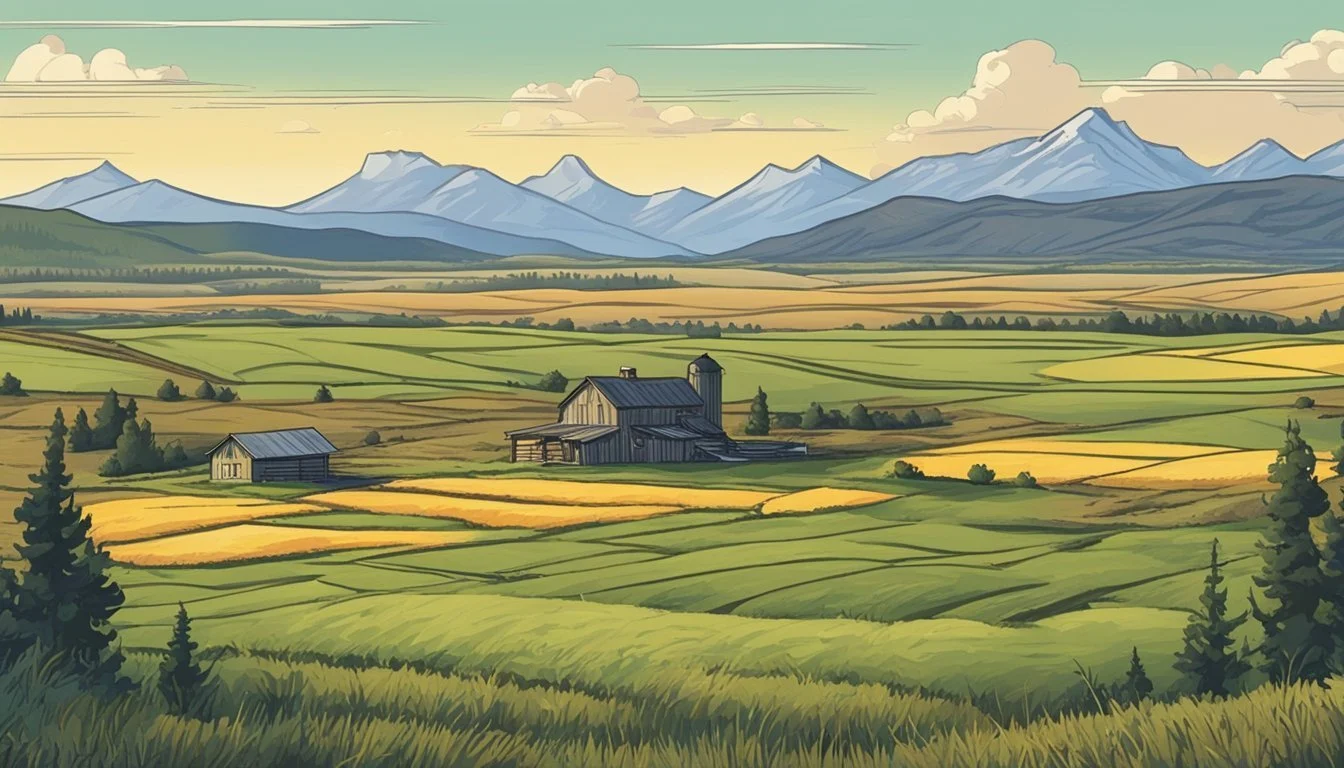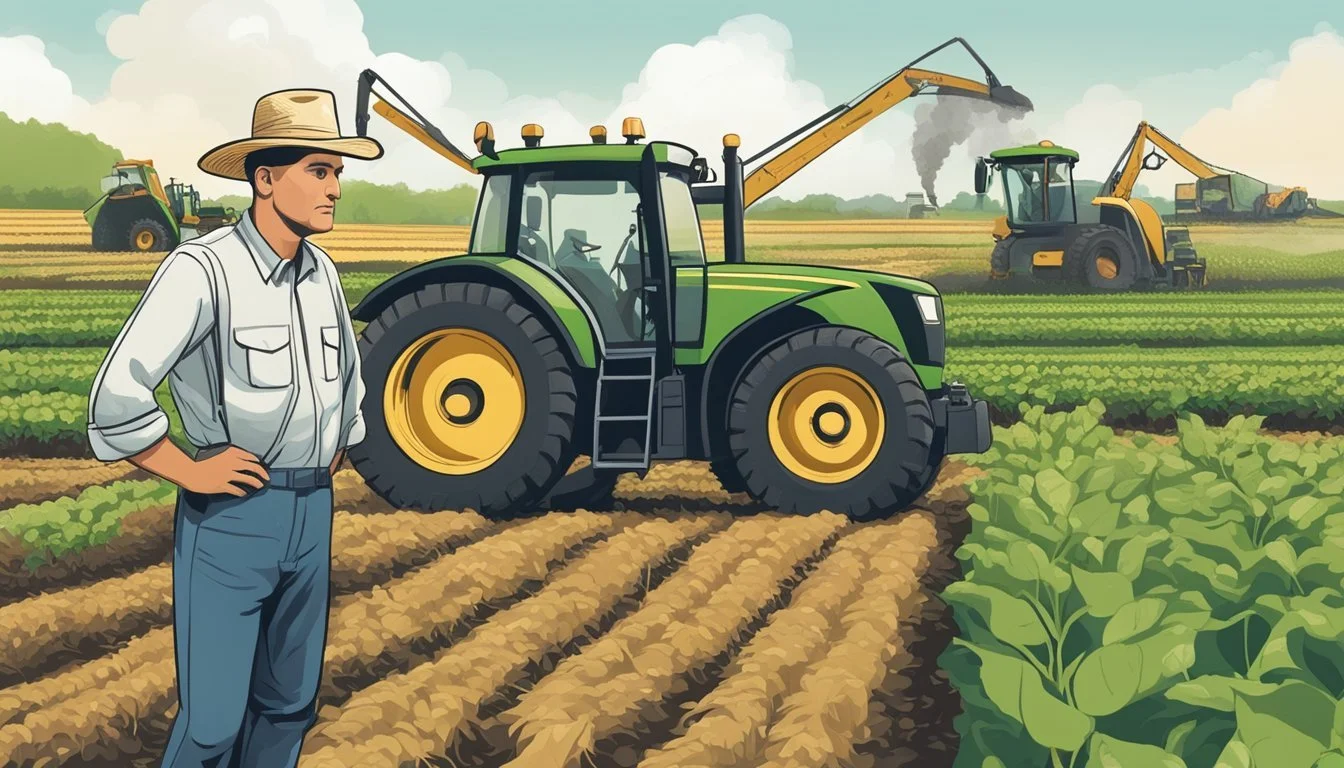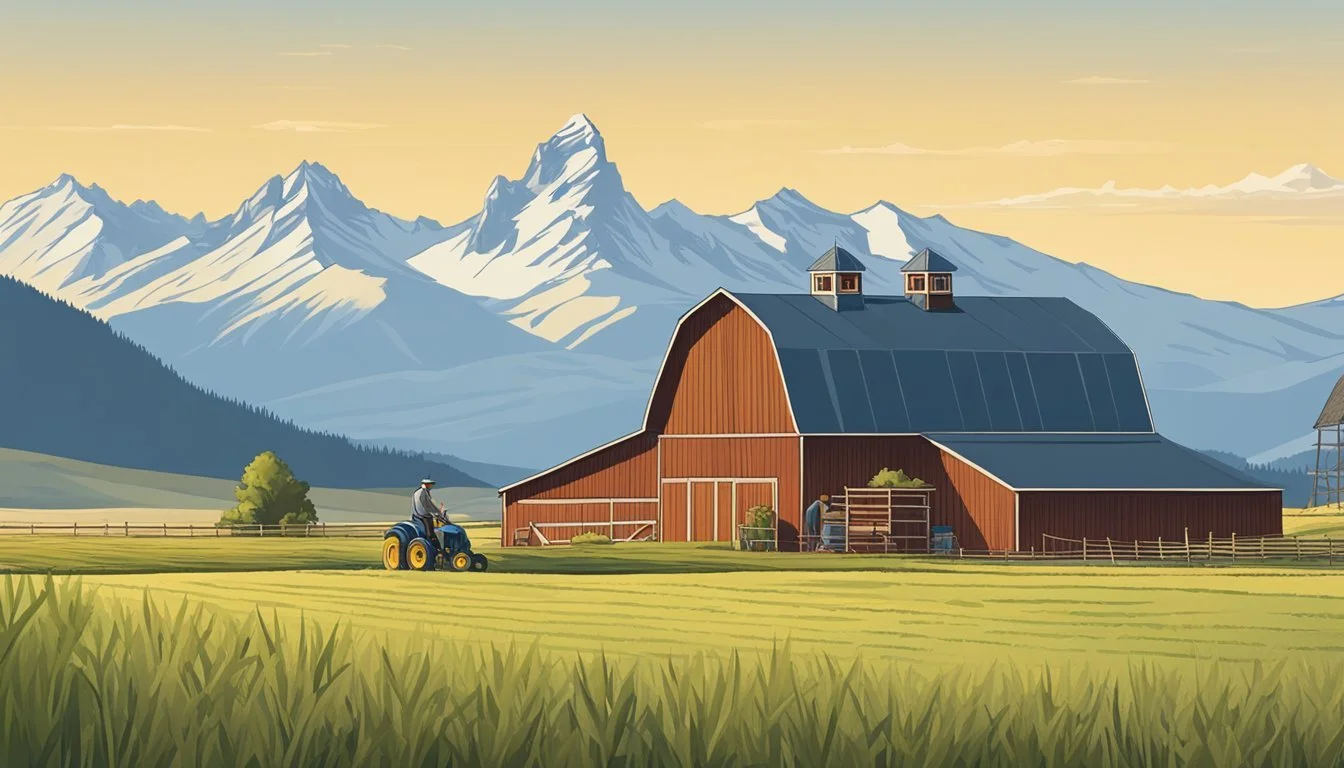Right to Farm Law in Montana
Understanding Agricultural Protections
Montana's commitment to agriculture is enshrined in its constitution and further supported through specific statutes. These laws collectively establish a 'Right to Farm' in the state, designed to protect the interests of the farming community. The intent is to shield farmers and ranchers from nuisance lawsuits, particularly those originating from newer residents who may not be accustomed to the realities of agricultural operations. This legal framework not only supports Montana's farm economy but also preserves the land associated with agricultural activities.
Since its enactment in the 1970s, the Right to Farm Law has served as a cornerstone in establishing the legal environment favorable for agriculture. It recognizes the vital role that farming plays in the state's economy and cultural heritage. By legislating in favor of agriculture, Montana acknowledges the challenges that farmers face and endeavors to promote a sustainable future for the industry. The laws ensure that the farming and ranching community receives encouragement and protection to continue their operations, thereby reinforcing the state's commitment to enhancing and developing its agricultural sector.
Historical Background
The historical background of Right to Farm laws underscores their necessity in protecting agricultural practices from urban encroachment and nuisance lawsuits.
Origins of Right to Farm Laws
Right to Farm laws emerged as a response to the increasing conflicts between agricultural and urban development. With the objective to safeguard farmers and ranchers, these laws are designed to protect agricultural operations from nuisance lawsuits brought by individuals who move into rural areas and later object to normal farming operations. They serve as a bulwark ensuring that agricultural productivity is not hindered by the expansion of residential areas and the changing dynamics that come with it.
Development in Montana
In Montana, the commitment to agriculture is enshrined in the state's constitution, emphasizing this sector’s importance. Since 1973, the Montana Constitution has recognized the need to protect, enhance, and develop agriculture. Following this constitutional directive, the legislature enacted Right to Farm statutes to sustain the farm economy and protect the agricultural land base. These statutes recognize the significance of agriculture as the backbone of Montana's economy and its cultural heritage, fortifying their stand against the specific challenges posed by nuisance claims in the state.
Legal Framework
The legal framework of Right to Farm laws in Montana is established through a combination of state statutes and influenced by overarching federal provisions. These laws are designed to protect and promote agricultural practices against nuisance claims and urban encroachment.
State Law Provisions
Montana's Right to Farm laws are codified in the Montana Code Annotated (MCA), specifically under § 27-30-101. These statutes affirm the state’s commitment to agriculture by limiting nuisance lawsuits against agricultural operations. The legislation asserts that long-standing agricultural operations should not be deemed a nuisance after later changes in land use in surrounding areas. Montana’s constitution also underscores the importance of agriculture, directing the legislature to protect this vital industry.
Key Statutes:
Montana Code Ann. § 27-30-101 (3): Addresses the core of Right to Farm protections.
MCA 76-2-901: Relates to local policies, such as those adopted by Lake County, which support agricultural activities.
Federal Influence on Right to Farm
While Right to Farm laws are primarily state-driven, federal laws can influence state agricultural policies and protections. No direct federal Right to Farm statute exists; however, federal agricultural policies and funding can indirectly support the spirit of these statutes by prioritizing agricultural development and land use. Federal environmental regulations also intersect with state Right to Farm provisions, setting the context within which state laws operate.
Federal Influence:
Agricultural policies and funding: Encouraging development and stability in agriculture.
Environmental regulations: Coexisting with state Right to Farm laws within a legal framework.
Key Elements of Montana's Right to Farm Law
Montana's Right to Farm Law serves to solidify the protections afforded to agriculturists against nuisance lawsuits while detailing the farming practices that are expressly defended under these statutes.
Protected Farming Practices
Under the Right to Farm statues in Montana, a range of agricultural activities are safeguarded. These include, but are not limited to:
Noise: Sounds naturally emanating from day-to-day farming operations.
Odors: Scents associated with livestock, manure management, and crop cultivation.
Dust and Fumes: Particulates produced during plowing, harvesting, and other field work.
Wildlife Damage: Measures taken to prevent harm from wildlife to crops and livestock.
Labor Use: Employment and utilization of labor in agricultural operations.
Trespass Prevention: The right to protect property from unauthorized access or use.
These practices are vital to the agricultural industry and are protected to ensure that farming operations can continue without undue interference.
Nuisance Claim Protections
Montana’s Right to Farm Law establishes clear protections for farmers against nuisance claims. Key points include:
Pre-Existing Operations: If a farming operation precedes the complainant’s property purchase, it is typically protected from nuisance lawsuits.
Reasonable Farming Practices: Operations that utilize standard, accepted farming practices enjoy protection under the law.
Good Farming Practices: Farmers who adhere to appropriate agricultural practices and state regulations reinforce their Right to Farm protections.
The Right to Farm Law aims to balance the needs and rights of agricultural producers with those of neighboring residents while supporting the critical role of agriculture in Montana’s economy and heritage.
Impact and Interpretation
The Right to Farm laws in Montana shield farmers from nuisance lawsuits, reinforcing the state's agricultural foundation. Interpretations of these statutes have proven vital for both the state's economic interests and the preservation of rural lifestyles.
Role in Protecting Farmers
In Montana, Right to Farm (RTF) laws play a pivotal role in safeguarding the interests of farmers. These laws support the notion that agricultural practices, if established prior to surrounding non-farming developments, should not be deemed a nuisance. This legal protection allows farmers to sustain their operations without the persistent threat of lawsuits related to the customary noises, odors, and activities inherent to farming. Especially in rural areas where farming is often a primary economic activity, the RTF laws maintain the stability and viability of agricultural livelihoods.
Notable Legal Cases
Montana’s RTF laws have been at the center of several key legal cases since their inception. These cases typically involve farmers whose agricultural practices come under scrutiny when new, non-farming neighbors move into rural areas and file nuisance claims. The courts often refer to the intention behind the RTF statutes—to protect and enhance agriculture—when adjudicating such cases. One prominent case that illustrates the application of Montana’s RTF laws is Held v. State of Montana. Although centered on environmental concerns and climate change, this lawsuit highlighted the interaction between agricultural practices, environmental policy, and the state’s constitutional directives to maintain and improve the environment.
Challenges and Controversies
In Montana, the Right to Farm Law aims to shield agricultural operations from nuisance lawsuits, but it faces challenges related to public nuisance concerns and zoning issues which primarily affect landowners and local communities.
Public Nuisance Concerns
Rights to farm in Montana often clash with public nuisance concerns as activities from farming can lead to conflict with nearby residents over issues such as odor, noise, and potential pollution. While the law protects farmers, there are instances where non-farming neighbors may feel their living conditions compromised due to agricultural practices. These neighbors argue that the statutes shouldn't provide blanket immunity for farms, especially when operations may affect the quality of life or the environment negatively.
Zoning and Land-Use Issues
Zoning plays a critical role in how land is utilized in Montana, affecting where agricultural operations can exist and expand. However, zoning conflicts arise when agricultural land is repurposed for residential or commercial developments. It becomes particularly contentious when new landowners are unfamiliar with the typical disturbances of agricultural activity. Farmers support the Right to Farm Law to preserve the agribusiness landscape, yet critics argue these statutes can hinder proper land planning and community development.
The Right to Farm law serves as a protective layer for agriculture but is intricately tied to broader issues of land use, community development, and environmental quality. These challenges are perpetual balancing acts for Montana's legislation and its constituents.
Comparative Analysis
This section delves into how Montana's Right to Farm Law relates to legislation in other states and the resources available at the National Agricultural Law Center for understanding these laws.
Montana Vs. Other States
Montana's Right to Farm statutes were established as a constitutionally rooted commitment to agriculture since 1973. Montana differs from states like Florida and North Carolina by having this commitment enshrined in its constitution, which lays a strong foundation for the laws that support agriculture.
Florida and North Carolina have also enacted Right to Farm laws that are similar in intent to Montana's but vary in their provisions and legal framework. Florida's approach has had considerable legal evolution, notably to bolster protections against nuisance lawsuits.
Arizona, on the other hand, may share Montana's goal of safeguarding farmer interests but has unique aspects to its Right to Farm laws that reflect the state's specific agricultural and legal environment.
By examining a map of Right to Farm laws across the United States, one may note that while all fifty states house such legislation, their individual specifications and levels of protection vary widely.
National Agricultural Law Center Resources
The National Agricultural Law Center offers a comprehensive array of resources for individuals looking to understand the nuances of Right to Farm laws in the U.S.
The Center's databases provide access to statutory language and can offer comparative insight into how Montana's legislation aligns with that of other states.
Compiled tables and briefs on the website detail specific statutory elements, aiding in a granular analysis of how Montana's laws operate within the larger national framework.
Resources specific to Montana can be found under headings such as "Montana Right to Farm Enabling Statute (Civil)," ensuring that readers have precise and targeted information.
Economic and Environmental Aspects
Montana's Right to Farm Law has tangible impacts on both the local economy and the environment. This section examines these aspects, highlighting the law's influence on the economic vitality of farming communities and the stewardship of natural resources.
Contribution to Local Economy
The agriculture sector is a cornerstone of Montana's economy. Farming acts as a major economic engine, with Right to Farm statutes supporting the persistence and growth of this key industry. These laws help safeguard the agricultural economy from nuisance lawsuits which could threaten farm operation stability.
Conservation Easements: They play a role in maintaining the agricultural landscape by preventing non-farm development, thereby preserving the agricultural character and economic base of farming communities.
Impact on Soil Health and Environment
Soil health is central to the sustainability of farming in Montana. Right to Farm laws indirectly promote the adoption of practices that enhance soil vitality, as they allow farmers to focus on long-term land stewardship without the constant threat of nuisance claims.
Environmentally Sound Practices: Laws that defend farming often lead to more environmentally friendly farming methods, which can include:
Reduced tillage
Crop rotation
Cover crops
Integrated pest management
These practices contribute to better soil structure, reduced erosion, and increased biodiversity, which are critical to long-term environmental health.
Future of Right to Farm in Montana
The future of Right to Farm laws in Montana is poised to navigate between adjustments to legal frameworks and adapting to new farming methodologies. Legislative and practical changes will likely shape the agricultural landscape.
Potential Amendments
Legislative Considerations: Amendments to Montana's Right to Farm statutes may arise to clarify the balance between agricultural activities and non-farming land use. As populations grow and more newcomers settle near farming operations, lawmakers may be compelled to revisit the statutes, potentially tightening or expanding the scope of protections for existing farming and aquaculture operations.
Legal Precedents: Changes in legal interpretations can also be anticipated, as courts deal with more cases related to nuisance claims and environmental impacts. Such cases could set new legal precedents, influencing future amendments and the implementation of Right to Farm laws.
Evolving Agricultural Practices
Technological Advancements: Montana's agricultural sector might see the introduction of advanced technologies which can lead to changes in regulatory needs. For example, precision farming, which uses data and analytics to optimize crop yields, may necessitate updates in the legal framework to ensure such practices are equally protected under Right to Farm laws.
Sustainable Farming: As aquaculture and other sustainable farming practices gain traction in Montana, Right to Farm laws may incorporate specific provisions to encourage and protect these environmentally-friendly approaches, potentially altering agricultural land use patterns and influencing the extent of legal protections for farmers.
Resources and Further Reading
For readers seeking to deepen their understanding of Montana's Right to Farm laws, a variety of resources are available. These resources provide detailed analysis and report on the evolving landscape of agricultural law in the state.
Academic and Legal Research
National Agricultural Law Center: The Center offers comprehensive legal analysis and resources on Right to Farm laws nationally, which include pertinent information about Montana's statutes.
University of Montana: Scholarly articles discuss the implications of Right to Farm amendments and Montana's unique constitutional directive to protect agriculture.
Media and News Publications
One Rural: Reports on Montana's constitutional commitment since 1973 to protect and enhance agriculture are available.
Local Newspapers and Online News Outlets: Articles and reports on local agricultural issues provide context to the practical applications of the Right to Farm laws in Montana.










